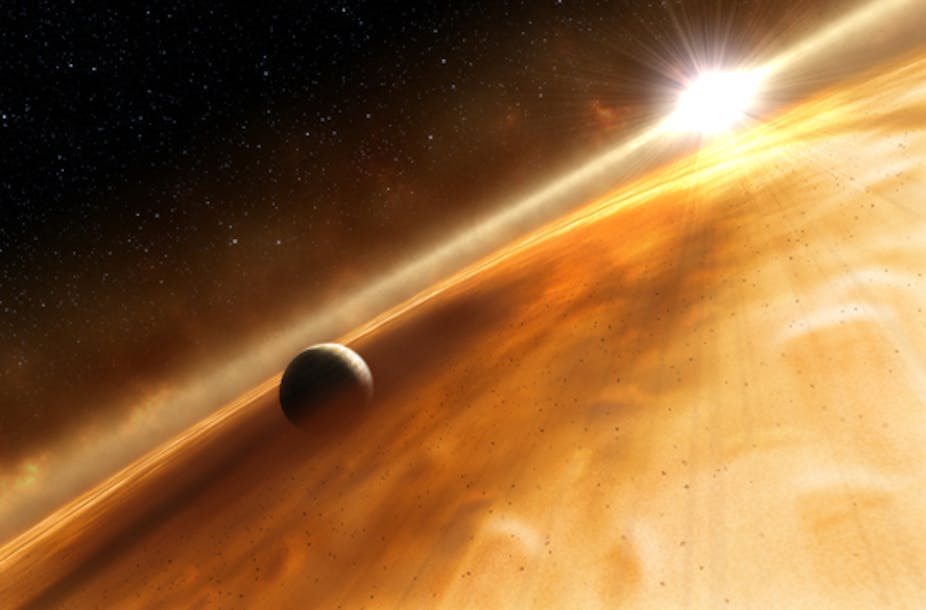A distant planet that made its name as the world’s first directly photographed exoplanet is at the centre of an astronomical stoush, after it veered off course and new doubts were raised about its existence.
It was in 2008 that Hubble astronomer Paul Kalas from the University of California at Berkeley and NASA announced that Fomalhaut b had been photographed orbiting a star called Fomalhaut around 25 light years from Earth.
The exoplanet was orbiting just inside a dust ring surrounding the star Fomalhaut. But new images show it in an unexpected place – further in amongst the dust than it ‘should’ be – prompting University of Toronto astronomer, Ray Jayawardhana, to question whether Fomalhaut b really is an exoplanet at all.
“They continue to call it a directly imaged planet,” Jayawardhana was quoted as saying on the Nature news website. “I think it’s time to stop doing that.” New Scientist magazine quoted Jayawardhana raising further doubts, saying, “I feel a little bit uncomfortable that the poster boy for directly imaged planets is the weakest case or least secure case that we have.”
Of course, the speculation has not gone down well with the astronomer who originally discovered Fomalhaut b, Paul Kalas, who has accused Jayawardhana of “trying to make a controversy out of nothing” and said the new positioning could be explained by the fact that the latest photographs were taken with different instruments than were used for the earlier imaging.
Jonti Horner, an exoplanet expert and Post Doctoral Research Fellow at University of New South Wales, said he was withholding judgement until the next image of Fomalhaut b is released next year.
“The likelihood of observing the system just as the planet is being dynamically slung onto a new orbit (and therefore is unstable) seems quite low to me, purely because things tend to spend far less time on unstable orbits than stable ones. If they’re unstable, they’ll eventually be removed, or moved back onto stable orbits, whilst when they’re on stable orbits, they can hang around for a huge period of time,” he said.
“However, if things look noticeably different with next year’s observation, then I suspect people will start properly arguing about it,” said Dr Horner.
Whatever your view, the astronomical fracas illustrated the best of the scientific process, as people question old results and old theories as new data is acquired, he said.
“It’s just the way things work, to an extent - if we all agreed on everything, life would be very dull, and science would advance far, far more slowly!”

